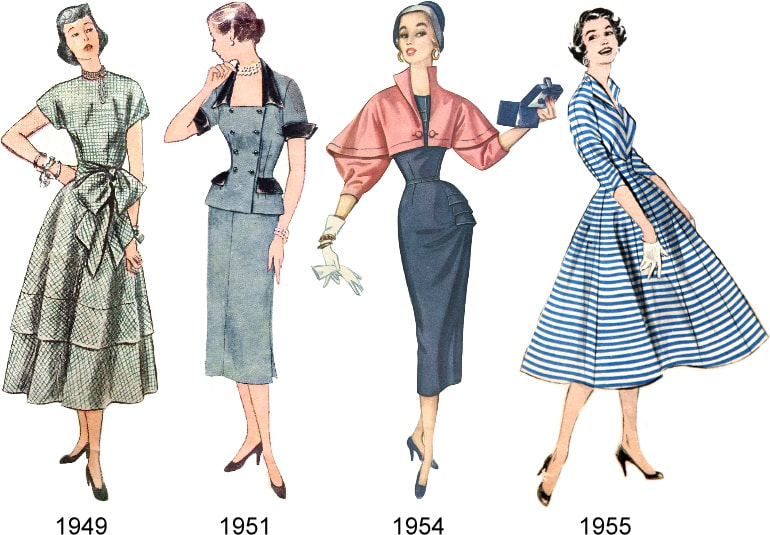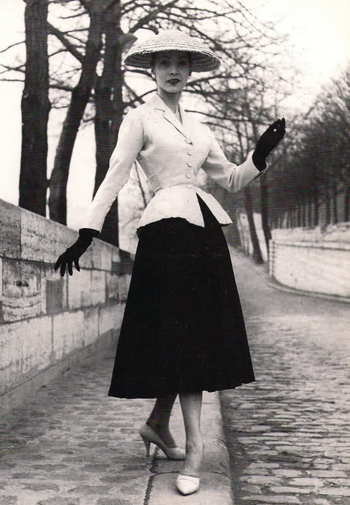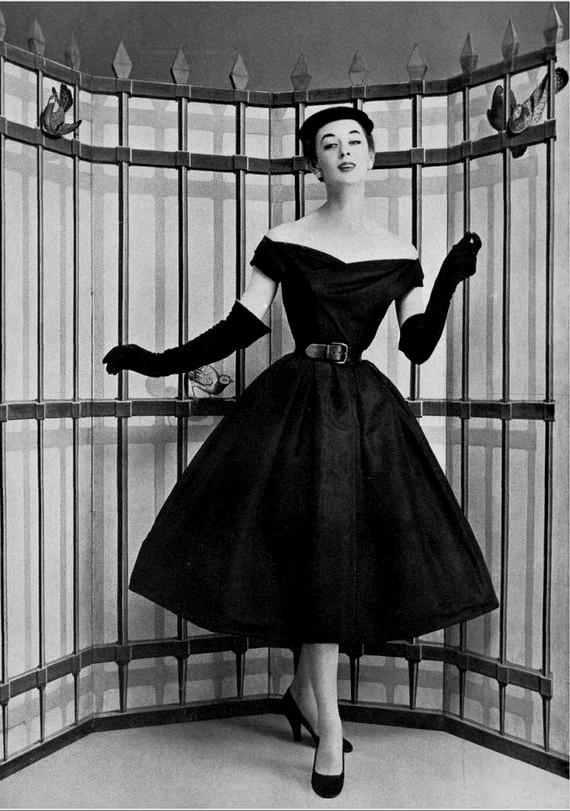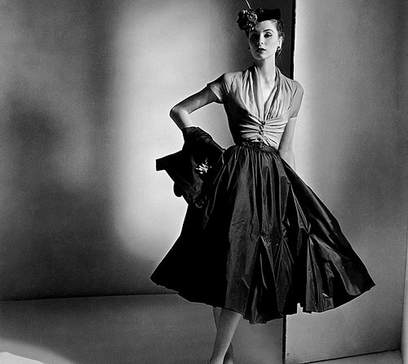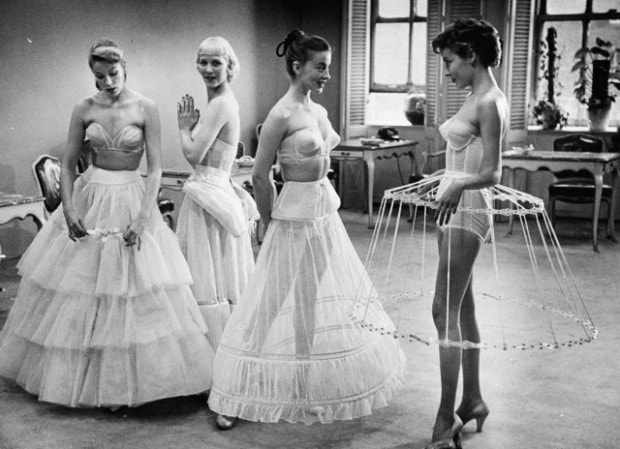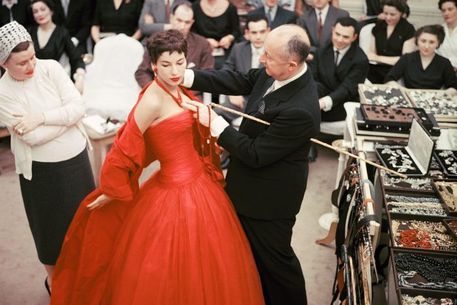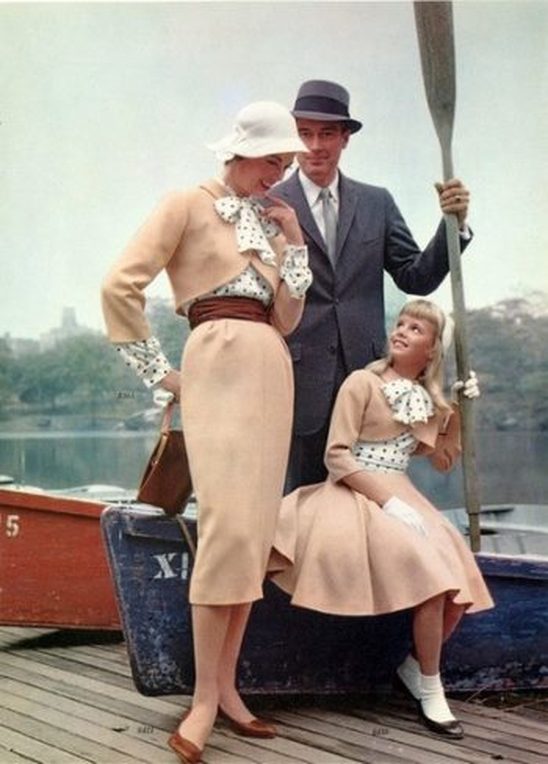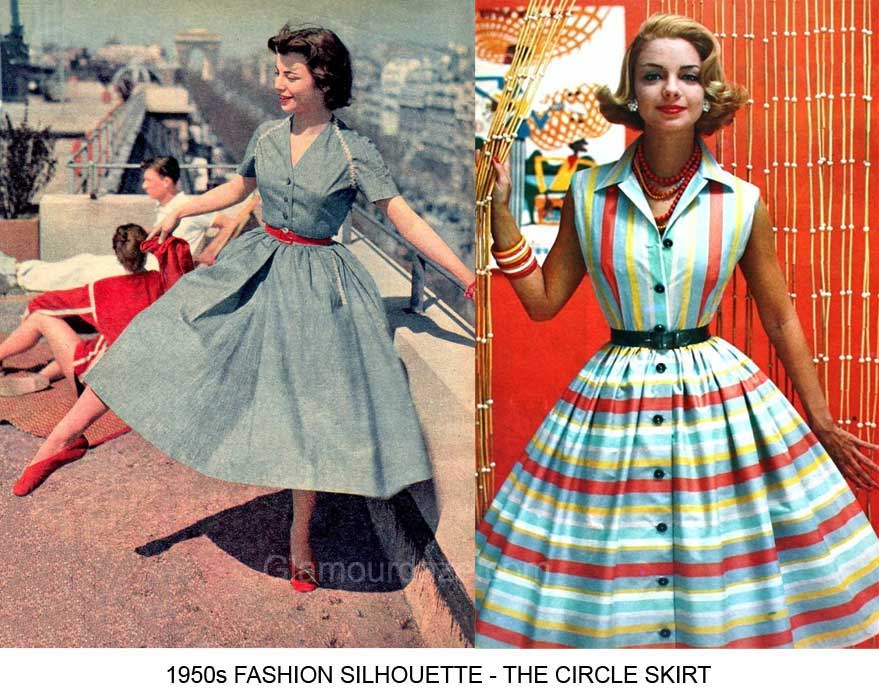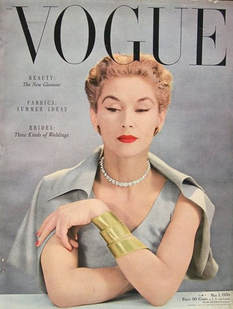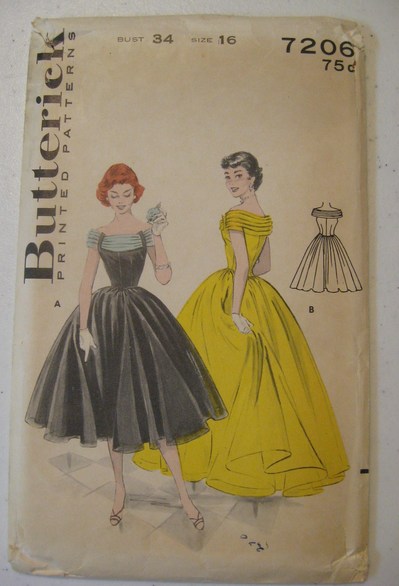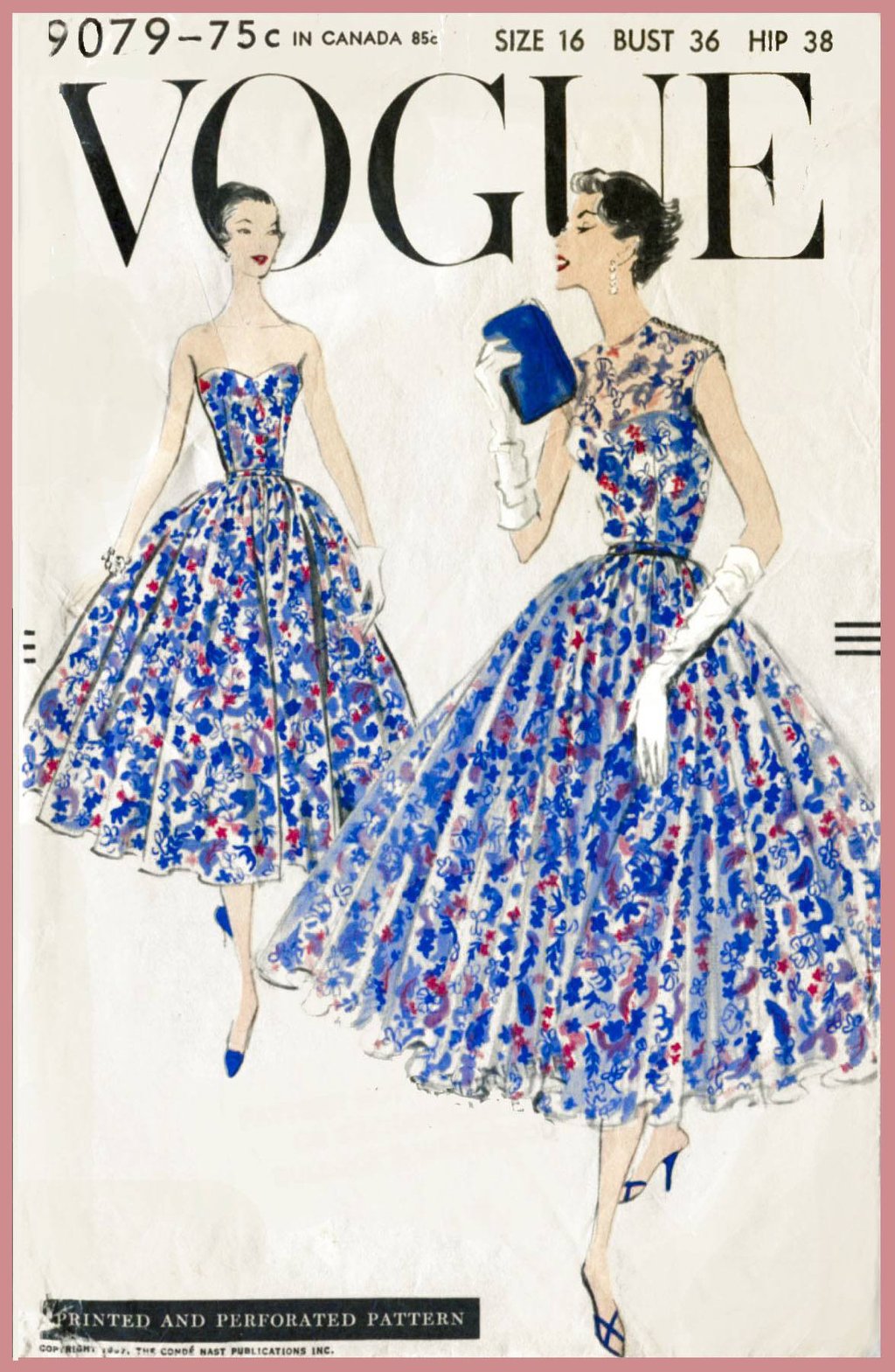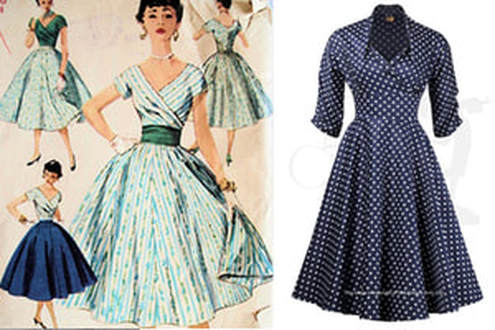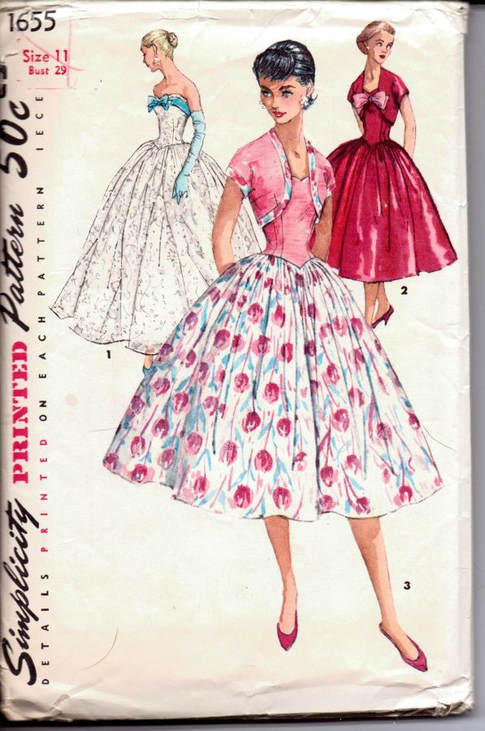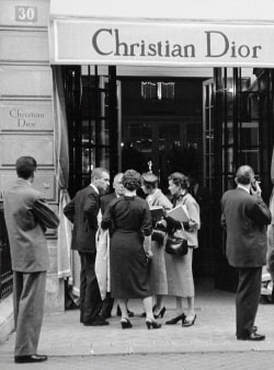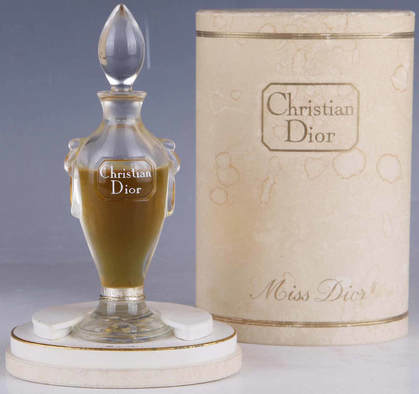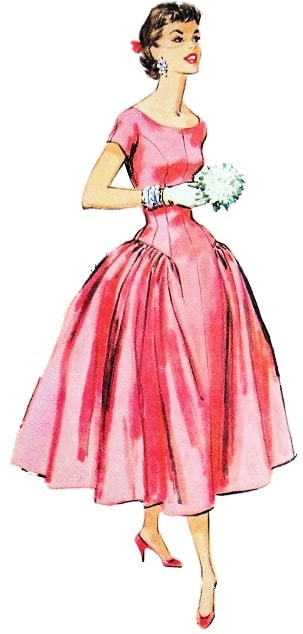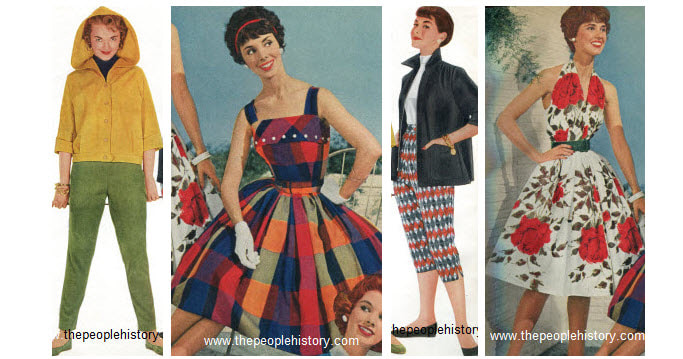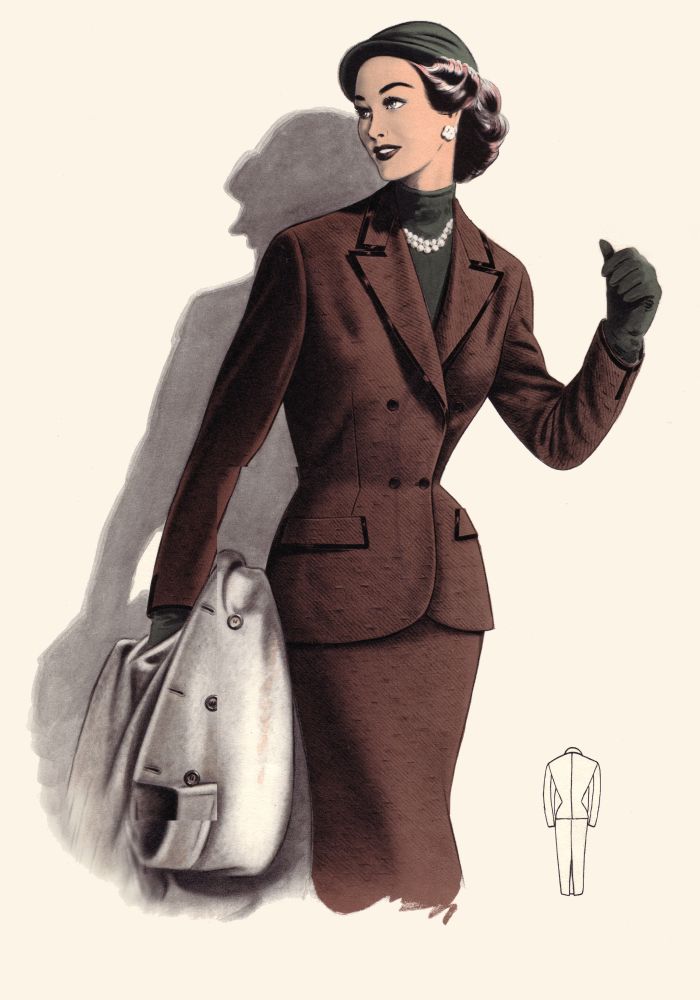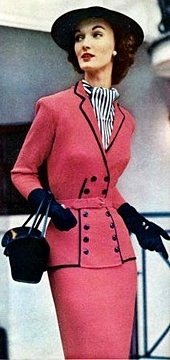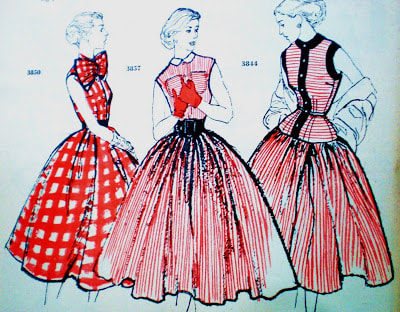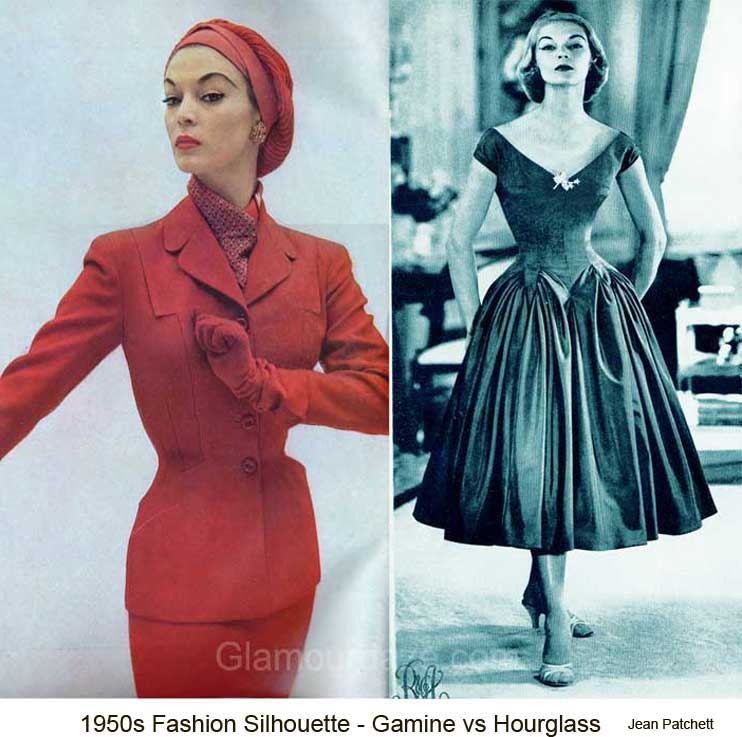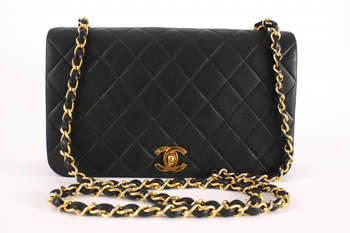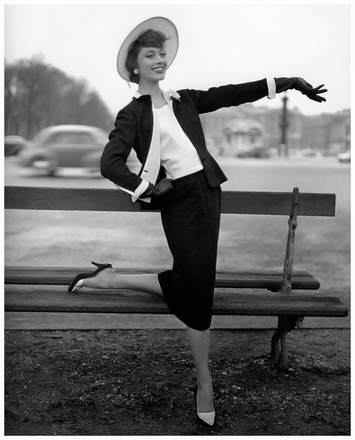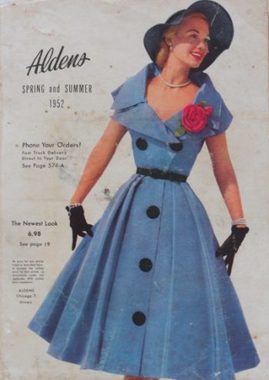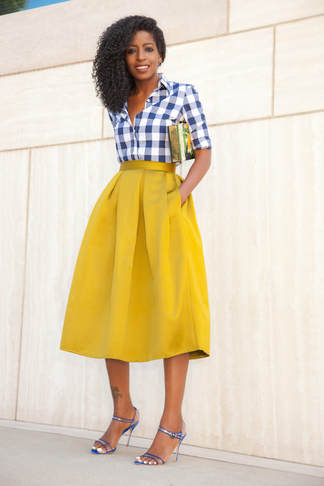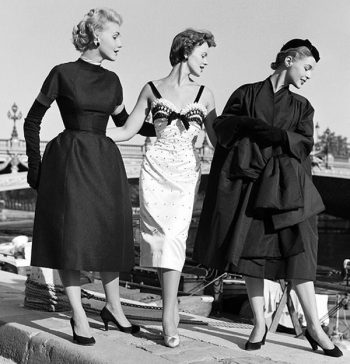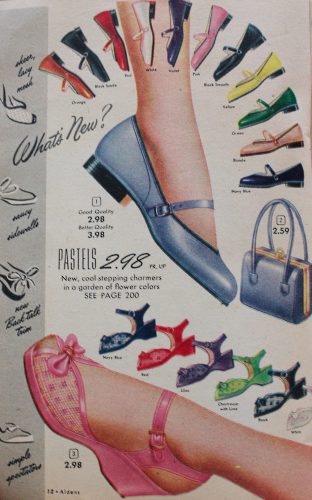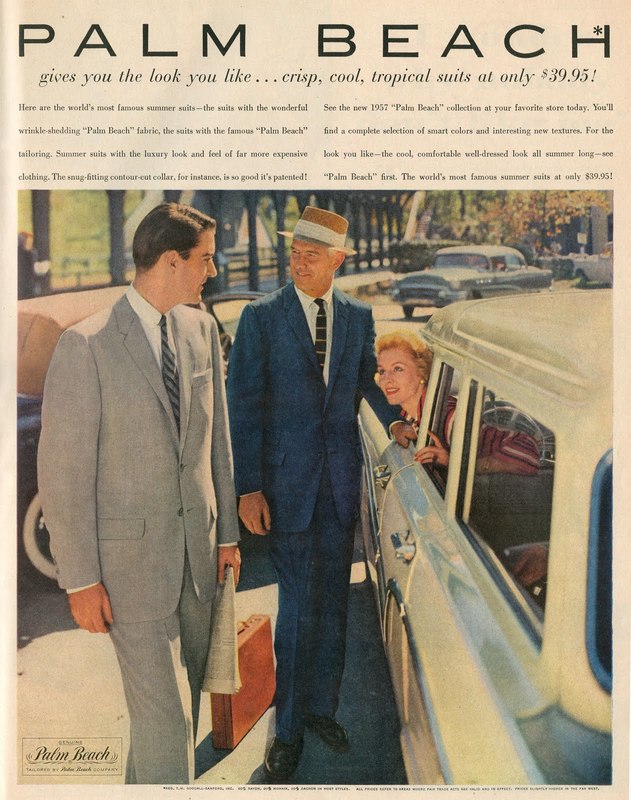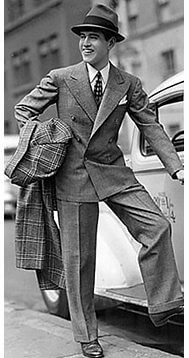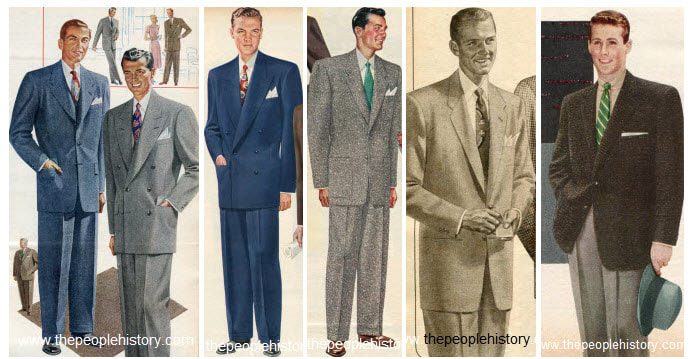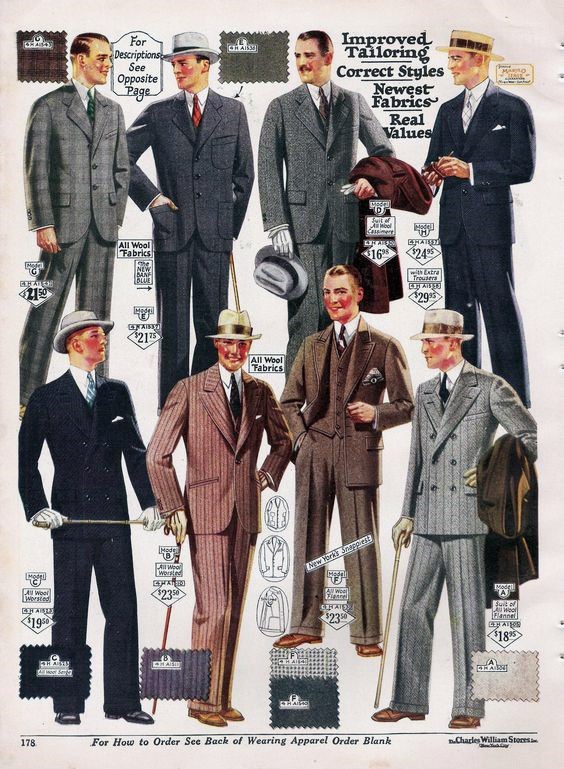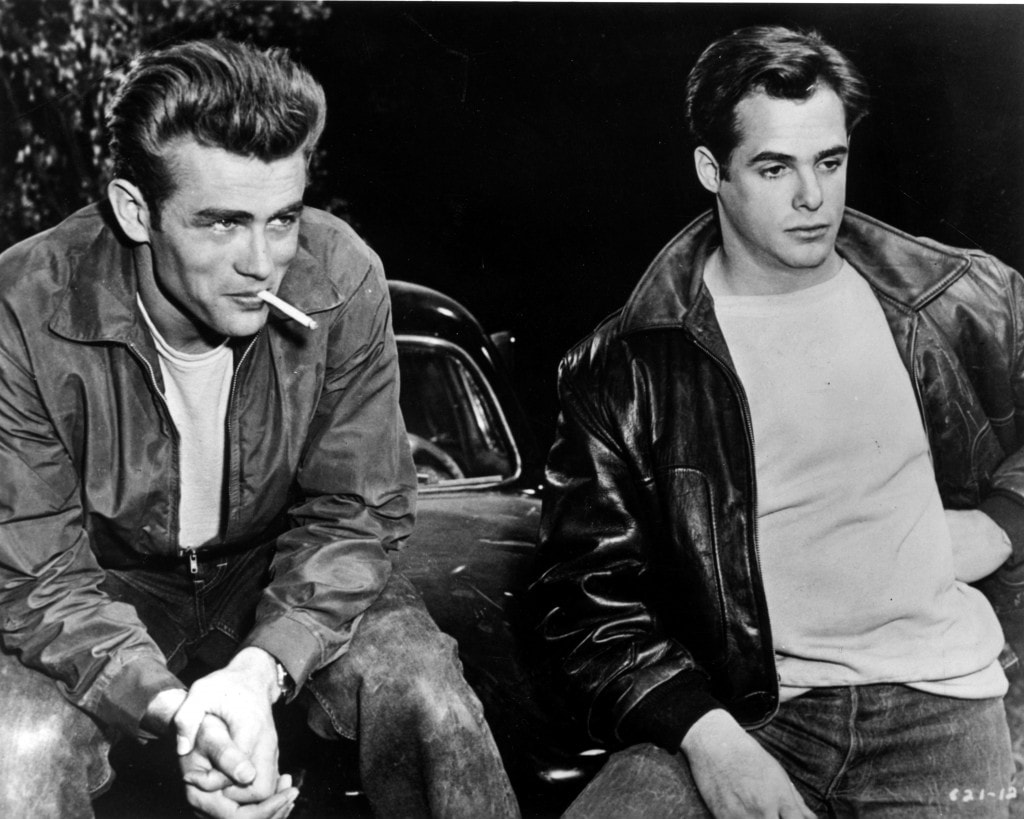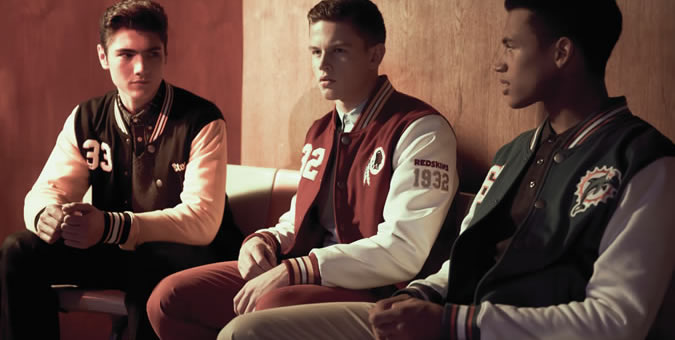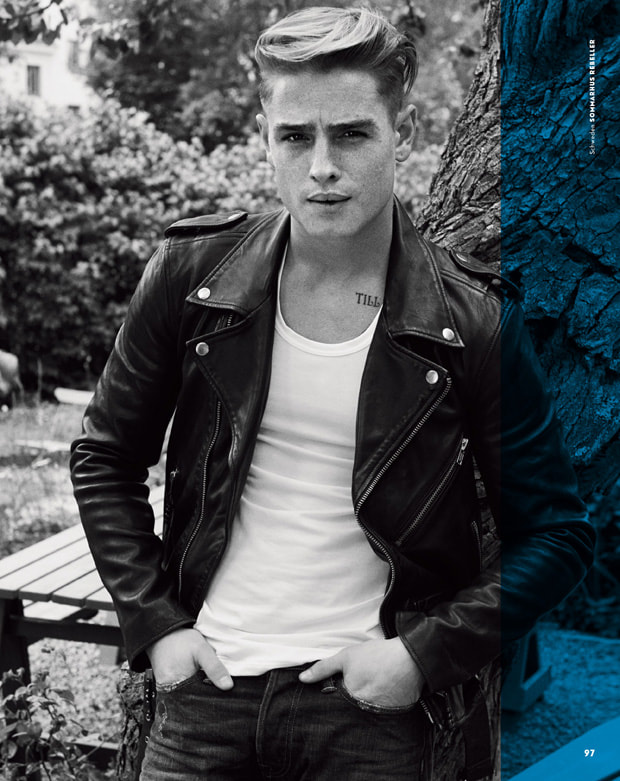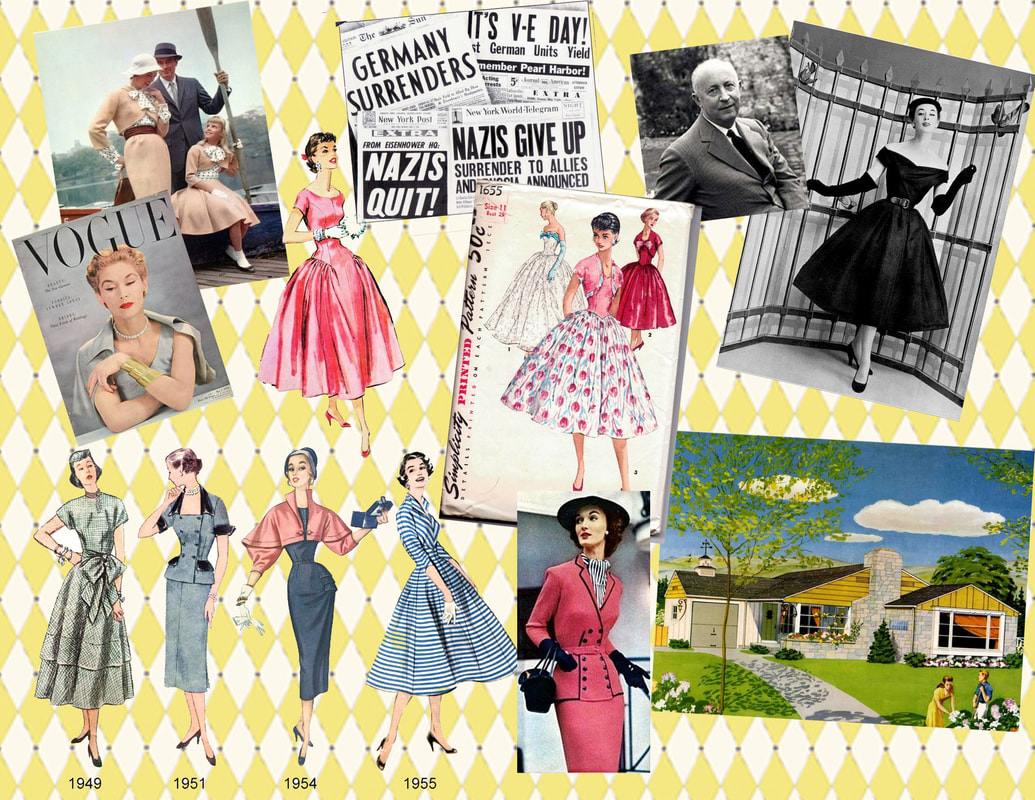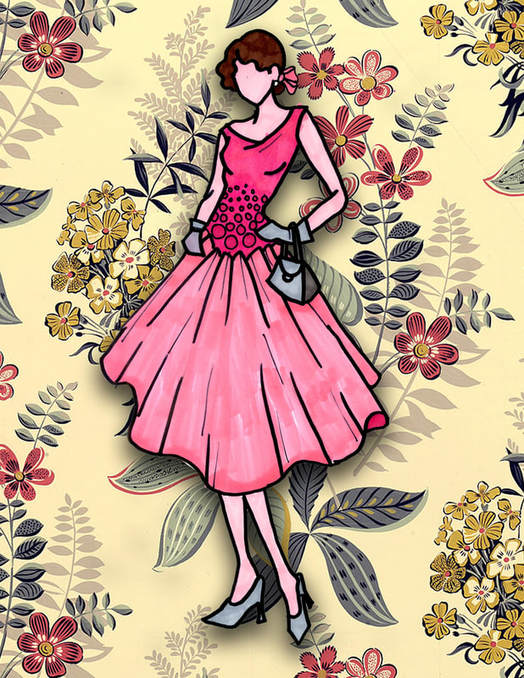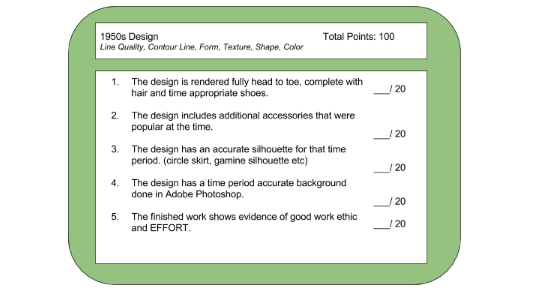Reverting to Old Ways
In many ways, the 1950's took a big step back, especially for women. During World War II while the men were away, women began to gain an independence that was rare before the war. They left their homes to work in offices and factories, earning and managing their own money.
In the 40's Clothing was heavily restricted throughout and just after the war. Everything from the length of skirts to the size of collars was regulated. This resulted in a slim, straight silhouette. Women wore comfortable clothing like suits and shirtdresses, and even began to regularly wear pants, especially to work. They had to ‘make do and mend,’ buying or sewing well-made clothing that had to last and fixing garments that were past their prime. | |||||||
Christian DiorIn 1947, Christian Dior permanently changed the fashion industry, as well as created the look that would dominate the next decade. Dubbed the ‘New Look’ by Harper’s Bazaar editor Carmel Snow, Dior’s first fashion collection, shown in Paris, was the exact opposite of the ‘40s look.
The fabric was luxurious and voluminous. Shoulders were soft instead of squared, the figure was hourglass instead of boxy, and the short, straight skirt of the ration-happy ‘40s was replaced by a huge, billowing one that hit at mid-calf. There were also skirts that were so slim and fitted that women found it hard to walk. Bodices were extremely tight, accentuating a tiny waist. |
The whole look was reminiscent of the mid-nineteenth century. To achieve the look women had to once again squeeze into some serious undergarments. A boned corset achieved the ‘wasp waist,’ and bust and hip pads completed the hourglass figure
|
|
Many women were outraged, especially in the United States. Protests were held targeting Dior and his new clothing. Women had just gained a large amount of equality and weren’t ready to give it up — both in work and in fashion. The new clothes used excessive amounts of fabric, needed constant maintenance, and required a complete coordinated accessory collection to be “perfect.” However, after the hardships of the war, everybody was ready for a change, and by the start of the ‘50s, everybody was wearing the New Look.
|
Return to ConservatismAs men returned home from the war, women also returned to the home as wives, mothers and homemakers. There was a migration to newly-built suburbs where life was supposed to be picture-perfect and traditional. Society became very conservative, and there was a rise in affluence. Racism and anti-communism were rampant. There was an air of conformity – everyone wanted to act and look ‘normal.’
|
The New Look
The full look of the 1950's was mature, glamorous and very put-together. Dresses, skirts and undergarments were constricting, but a wide range of new ‘leisure clothes’ allowed people to dress casually at home. Women were expected to be impeccably dressed and groomed in public or when their spouse was home, always with coordinating hats, shoes, bags, belts, gloves, and jewelry. In privacy, women dressed much simpler, more comfortable. Eventually these casual fashions became public clothing as well.
The full look of the 1950's was mature, glamorous and very put-together. Dresses, skirts and undergarments were constricting, but a wide range of new ‘leisure clothes’ allowed people to dress casually at home. Women were expected to be impeccably dressed and groomed in public or when their spouse was home, always with coordinating hats, shoes, bags, belts, gloves, and jewelry. In privacy, women dressed much simpler, more comfortable. Eventually these casual fashions became public clothing as well.
Fabric ShiftsFabrics were often luxurious, especially for eveningwear. Velvet, tulle, silk, and satin were popular. Cotton and wool were often used for daywear, along with new synthetic fabrics. Polyester and rayon were used to make all kinds of clothing, from blouses and men’s shirts to dresses and suits.
|
Counter New Look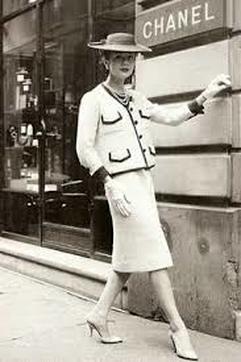
Coco Chanel hated the New Look so much that she reopened her business after closing it at the start of the war. In 1954, she came back with slim suits – the brand’s signature look – in wools and tweeds. Jackets were boxy with no collar, and skirts were straight and comfortable. She topped the look off with costume jewelry and the famous quilted bag. This look was for the modern independent business woman not tied down and refusing to conform to traditional gender roles that Dior's "New Look" suggested.
|
Men's Fashion
Men were still expected to dress formally in suits for most activities but the 1950's was the first time that attitude started to loosen. James Dean was incredibly influential in making the jeans, white tee shirt and leather jacket look popular and considered cool. Additionally, youth culture of the letter man jacket was also widely popular at this time.
Men were still expected to dress formally in suits for most activities but the 1950's was the first time that attitude started to loosen. James Dean was incredibly influential in making the jeans, white tee shirt and leather jacket look popular and considered cool. Additionally, youth culture of the letter man jacket was also widely popular at this time.
Assignment # 1
Google doc assignment on google classroom!
Google doc assignment on google classroom!
- Why were the 1950's seen as a set back for women?
- Describe Dior's "New Look". What does it look like?
- Why was this such a different look than the clothing women were wearing in the 1940's?
- Why do you think some women protested this new look?
- What does it mean when we say there was a return to conservatism in the 1950's?
- Why were magazines and mail order catalogs important?
- How did Dior expand his brand?
- How did this influence other fashion designers?
- How were Chanel's suits a counter reaction to Dior's New Look?
|
Assignment # 2
You are to create a mood board for the 1950's fashion. Feel free to include images that are of the time period and not necessarily "fashion". You need 10 images. Search 1950's backgrounds/prints for the background of your mood board. VIDEO TUTORIAL BELOW USING PIXLR E: www.youtube.com/watch?v=_OdQJFUoFLQ&feature=youtu.be |
|
PIXLR E VIDEO TUTORIAL BELOW:
|
Assignment # 3
You are to create a 1950's design inspired by what you have learned about the fashions of that era. It must include the following:
|
